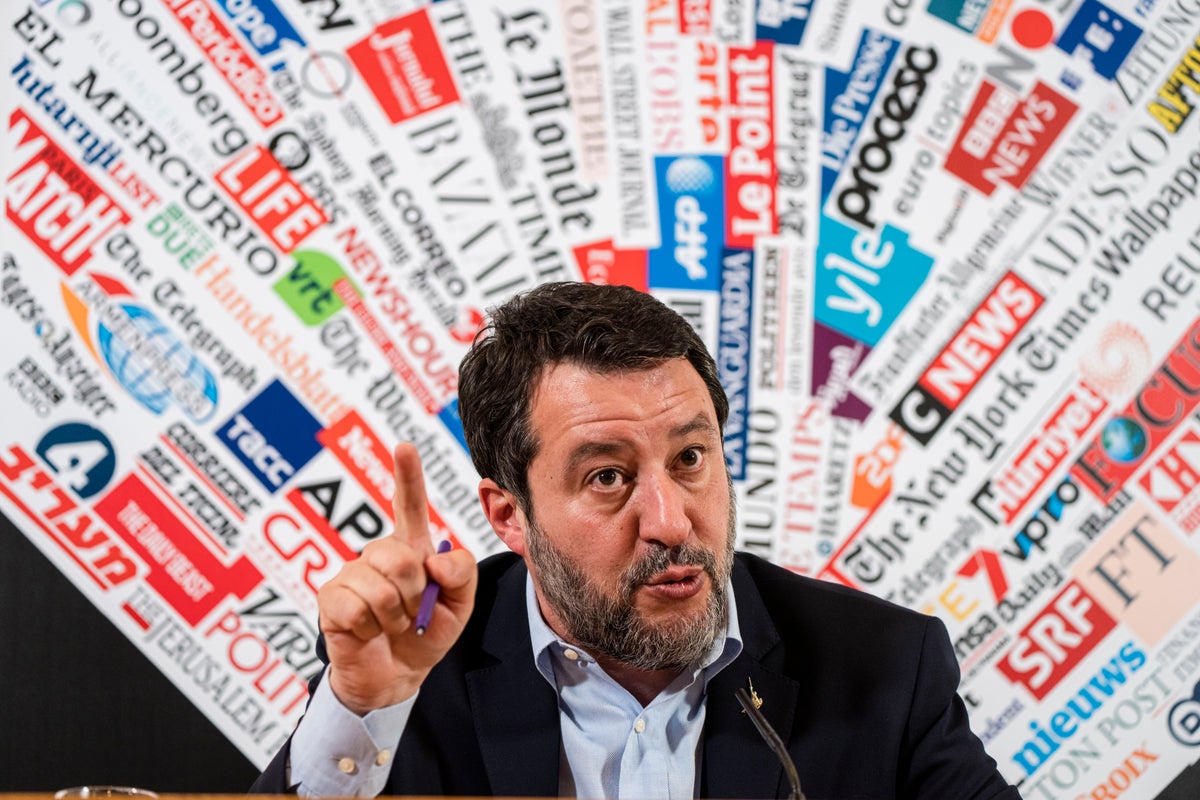
Italy’s infrastructure minister sought Tuesday to rally international interest in Italy’s latest attempt to build a bridge linking Sicily to the Italian mainland, a dream since the times of ancient Rome which has been planned, discussed and designed by a succession of Italian governments and never gotten off the ground.
Matteo Salvini vowed that the 10 billion euro project, which was last definitively shelved in 2013, would create 100,000 jobs, accelerate transportation times, develop two long-neglected parts of southern Italy and result in the biggest public works project in Europe this century.
The Cabinet last month approved a decree reviving the public company that last drafted plans for the bridge, allowing for the resumption of contract relationships with the concession company and general contractors.
“In five months, this government has revived what has been a dream of millions of Italians for decades, centuries even,” Salvini told the Foreign Press Association.
The proposed 3.3-kilometer suspension bridge linking Sicily’s Messina and Reggio Calabria on the mainland has been an on-again, off-again dream of a succession of conservative governments — Benito Mussolini and Silvio Berlusconi among them — but has never materialized due to concerns about cost, earthquakes, the environmental impact and fear of Mafia involvement.
Salvini, who is transport and infrastructure minister in Premier Giorgia Meloni's hard-right-led government, insisted those concerns were now resolved and that he hoped the bridge could be built by 2030. Salvini said to date, Italian governments had spent 300 million euros on plans for a bridge to nowhere, and that he was determined to finally produce something to show for it.
“The goal is to make sense of this enormous expenditure with the most futuristic and I think also touristically-speaking most admired work of the century.” He said his office had received expressions of interest from construction firms around the world, but that he hoped to make it a heavily Made in Italy project.
As last envisioned, the span would have six road lanes – three in each direction, including an emergency lane – and two rail tracks. Built to withstand a magnitude 7.1-magnitude earthquake, it would have a capacity of 6,000 vehicles per hour and 200 trains per day.
With anticipated rail and road improvements in the notoriously poorly serviced Calabria and Sicily that are also under way, Salvini said the bridge would halve the estimated 12-hour overland travel time to get from Rome to Messina and would actually be a net-positive for the environment because it would reduce polluting ferry traffic.
He vowed that sufficient safeguards were in place to ensure the necessary “antibodies” to rebuff Mafia infiltration in public works contracts, and that Italy now had a chance to make use of European pandemic-recovery funds to develop surrounding road and rail infrastructure.







